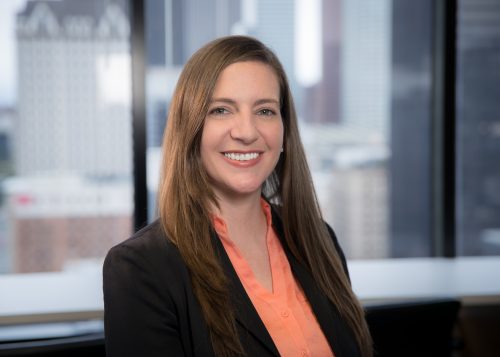Change Leader: Technical Vendor Representatives Benefit Engineering Projects

These profiles are based on interviews, and the opinions and statements are those of the subject and are not necessarily shared or endorsed by this publication.
Shelley Finnigan, S.E., is the global technical sales engineer and head of technical sales and marketing for ArcelorMittal.
More than Sales
As a representative for a major steel-producing company, Finnigan knows she’ll likely be seen by engineers and designers as a “salesperson.” But with her lengthy experience as a structural engineer at Thornton Tomasetti and with an extensive technical knowledge of steel and how it can impact and help designs in myriad ways, she sees herself as a partner to the design and construction teams that she works with.
“At ArcelorMittal, we supply this service of technical support where we have experts who have backgrounds in structural engineering who can talk to structural engineers about their projects in a very knowledgeable way,” she notes.
“We’re trying to improve outcomes in the built environment and make buildings more efficient,” adds Finnigan. “We’re trying to offer more-efficient steel solutions to the market. We’re continuously participating in research and development and initiatives that don’t just strive to save money in how we make steel, but also strive to push the steel industry forward.”
She also notes that her company’s technical representatives aren’t just salespeople. “They’re people who really know how steel can be used in efficient ways, and we’re really looking to work alongside designers to improve the building overall with the intent of saving costs and environmental impact.”
Building Expertise
After attending Purdue University and collecting bachelor’s and master’s degrees in civil engineering, Finnigan worked for Thornton Tomasetti in its Chicago and London offices. When she became a licensed engineer, however, she went in a different direction and moved into the company’s marketing and business- development departments. ArcelorMittal appreciated her diverse background and hired her for technical solutions support for its steel products.
“I take messaging from the steel mills we have, and I translate that to useful information for the structural engineers who design buildings, whether high-rise buildings or stadiums, aviation facilities—anything that’s part of the built environment,” says Finnigan. “I bring them the message about what unique types of steel ArcelorMittal has, and then I help them find ways to use [the products] in their projects, with the intent always to save costs associated with their building.”
One of her favorite projects to be part of was 150 North Riverside in Chicago (to read a feature article on this building, see “Tower of Power: Strong Steel Overcomes Constraints at a Tight Site,” Informed Infrastructure, March/April 2016, page 33).
“There were a couple of design challenges [the 150 North Riverside team was] facing with really heavy sections that were going to require a lot of fabrication and were going to be pretty challenging to put up in the field,” she notes. “And in conversations directly between me and the project manager, we were able to develop some outcomes that used ArcelorMittal high-strength steel solutions and some of our heaviest rolled shapes—the heaviest rolled shapes available in the world.”
Years later, she learned that in addition to saving the project millions of dollars, her company was listed as a consultant on the project’s IDEAS2 award application.
“For me, that was a huge achievement, because I had broken through that barrier of just being viewed as somebody who’s supplying steel for the project to be actually viewed as more of a partner on the project, which is a position where we can really bring value to the outcomes on the projects overall,” says Finnigan.
Stay Open
According to Finnigan, engineers tend to assume a vendor has sent a salesperson out there to talk to them, and that the salesperson might not have an indepth knowledge about engineering. She believes this tendency should change.
“I think it’s really important for design firms to be open to these conversations with technical representatives from vendors, and not necessarily go into the meeting assuming that person won’t be able to bring value to their project outcomes,” explains Finnigan. “There is a strong set of expertise that exists amongst these technical representatives from vendors that’s extremely specialized and can always bring some form of value to what the designers are tying to achieve.”
She notes that these technical representatives from vendors often are involved in design organizations that set standards, so they’ll have an inner working knowledge of how buildings are getting designed, and they can bring practical insights to challenges designers are looking to overcome.
“Designers should be open to learning from another person who is still just as technical as them, but has chosen to take an alternative career path as opposed to traditional engineering careers,” says Finnigan.
Visit Informed Infrastructure online to read the full interview.
About Todd Danielson
Todd Danielson has been in trade technology media for more than 20 years, now the editorial director for V1 Media and all of its publications: Informed Infrastructure, Earth Imaging Journal, Sensors & Systems, Asian Surveying & Mapping, and the video news portal GeoSpatial Stream.


